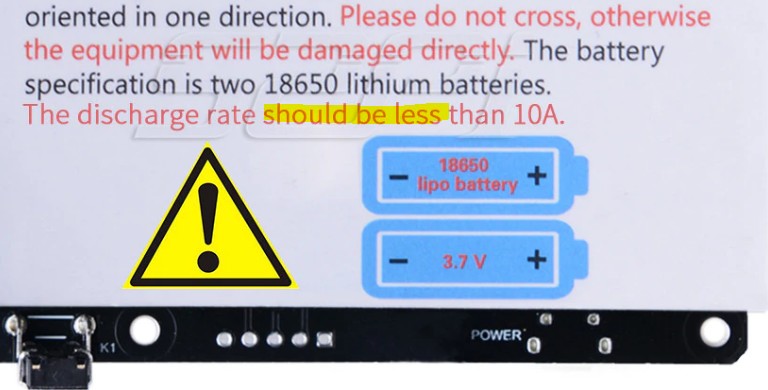I have a device that requires two 18650 batteries but it specifies no Aero type, what is the difference? Also, any suggestions for a NZ source for quality ones?
Thanks.
|
|
Only Aero I know of is a "brand" of battery - Aerolithium which is used in aircrafts, but never heard of a type of battery being aero - following with interest
Never heard of that expression on them. For most things I use that need low power 18650's I have been grabbing them from the solar light area at bunnings or mitre10 since they have a reason to not sell fake junk.
Higher power things need the high current ones and apparently vape shops are the go to for that, but I really don't want to set foot in one. Ordering online from overseas is so expensive now with the courier requirements they should follow.
Only thing I can think of is maybe they are talking about 18650s with/without the raised positive end bump, or protected/unprotected cells. I can't think how "Aero" would describe either of those things, but that's basically the only difference I can think of that would... make a difference. Might be a weird translation?
---
James Sleeman
I sell lots of stuff for electronic enthusiasts...
Simpower are a good local source of high quality cells (I have no affiliation with them apart from being a customer).
SIMPOWER: The Battery Specialists
With regards to "Aero" cells, its not a term that I'm familiar with. What application are you planning to use them in?
I'm supposed to respect my elders, but it's getting harder and harder for me to find one now.
peejayw: It's a UPS for a Raspberry Pi.
Brand and module?
I'm supposed to respect my elders, but it's getting harder and harder for me to find one now.
Ahh, "Aero model"
As in batteries used for model aircraft. It's a weird thing to state since 18650s really are not used in aero modelling, but I would hazard a guess they don't want you to use very high discharge current capable cells, in case something.... goes wrong.
Yeah, I would just use any 18650, it seems to have standard overcurrent and over/undervoltage protection built in anyway.
---
James Sleeman
I sell lots of stuff for electronic enthusiasts...
sleemanj:
Ahh, "Aero model"
As in batteries used for model aircraft. It's a weird thing to state since 18650s really are not used in aero modelling, but I would hazard a guess they don't want you to use very high discharge current capable cells, in case something.... goes wrong.
Yeah, I would just use any 18650, it seems to have standard overcurrent and over/undervoltage protection built in anyway.
Yip, reading that sales post now seems over draw could be an issue as indicated here as well, so one just needs to ensure its not high discharged rated 18650's
I think vapes also use high draw 18650's so those would also be excluded from use.

peejayw: https://www.aliexpress.com/item/33012132000.html
Uhh... are you going to use this in any kind of enclosed space, or with flammable materials nearby? Random Aliexpress specials controlling what are in effect pyrotechnic charges if they're mismanaged would make me very nervous, there's a ton of these things from reputable non-Aliexpress vendors out there, including inherently safer LFP ones.
Edited to add: Google "raspberry pi ups lfp", here's one hit from Tindie, including batteries.
sleemanj:Yeah, I would just use any 18650, it seems to have standard overcurrent and over/undervoltage protection built in anyway.
Only protected 18650s have those, and they're then longer than standard cells so you need to make sure they'll fit. There's a seller on TM who does good-quality cells and knows his stuff, that'd be the easiest way to get them, let me see if he's still around...
Never use unprotected 18650s in anything other than vapes unless you really know what you're doing, and you're confident that whoever did the electronics knew what they were doing.
Oh, and a followup video showing overcharging on NMC, LTO, and LFP cells.
neb:sleemanj:Only protected 18650s have those, .
Yeah, I would just use any 18650, it seems to have standard overcurrent and over/undervoltage protection built in anyway.
Protected cells are simply cells with the protection IC (combined protection and fet IC, or separate ICs) on a circuitboard hidden at the bottom of the cell (which is why they are longer).'
The device in question appears to have the same protection capabilities on board (at least from the specs, I have not examined the circuitry, don't have one of these myself), and therefore you don't really need protected cells here. Protected cells would buy you a tiny amount more security in case you did something stupid like shorted out the cell directly in your pocket, or if there was some design flaw in the device which caused the protection to fail, but the classical protection is so boiler plate it's pretty hard to screw that up.
Of course the cells should be matched for capacity and charge state when they are inserted togethor as a pair, just like any other battery cells.
---
James Sleeman
I sell lots of stuff for electronic enthusiasts...
|
|
